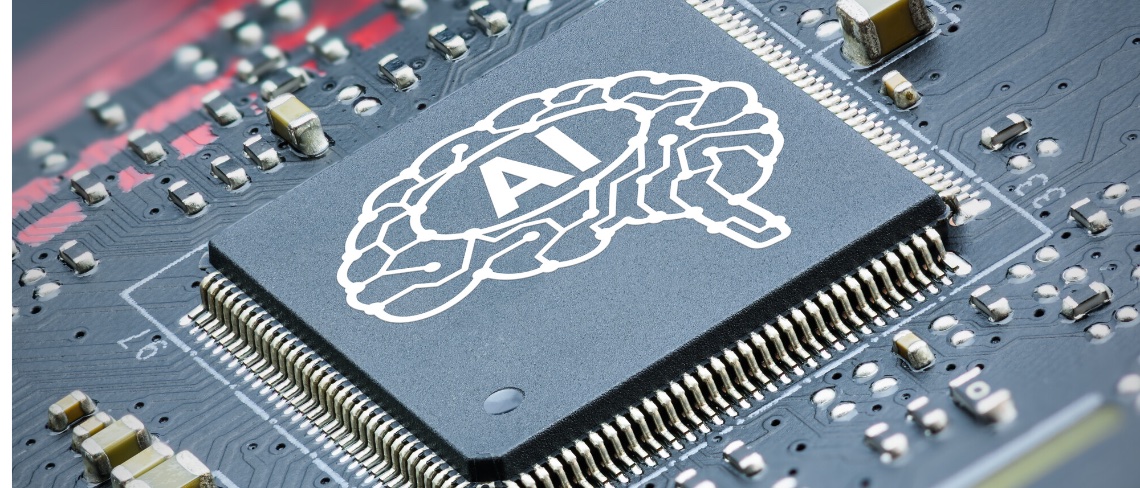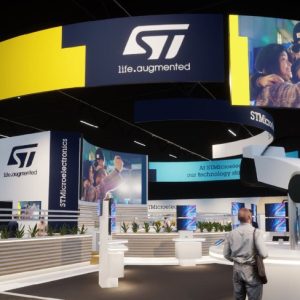Join us for our live stream at electronica 2022 to talk about Industrial AI on November 17! AI is already here. The question is, “What will it tell us?” Increasingly, machine learning at the edge is transforming what we do with our data. Smart factories predict when assets will fail. IoT devices can help train better models. And edge devices are computationally capable of doing more, thus relying less on cloud computing. Instead of transmitting loads of data constantly, embedded systems now take care of the computation and relay results, making cloud connectivity significantly more efficient. However, as we use machine learning everywhere, what will neural networks tell us about our smart objects and our society?
Industrial AI and the proliferation of machine learning at the edge
To explore this topic and more, we will look at Industrial AI and, more precisely, how companies are democratizing it. Machine learning at the edge is on the verge of ubiquity thanks to the marriage of hardware and software solutions that streamline workflows and optimize algorithm generation. We will see how, in a few clicks, one can create a machine learning algorithm for an STM32 embedded system. The live stream will explore the consequences of bringing machine learning to smart homes and the industry’s efforts around interoperability. We will also talk to experts about more easily creating applications that connect to the cloud.
In preparation for the event
To prepare for the live event, here are a few pages and blog posts to become familiar with the topics we’ll cover on November 17, 2022.
NanoEdge AI Studio
NanoEdge AI Studio helps streamline the creation of machine learning applications by running training and inference operations on the same microcontroller. The tool helps capture data on an STM32 device, then creates an algorithm that can run on the same system. The recent update supports new algorithms and data logging capabilities. Consequently, the tool can further help manipulate data to remove the need for Python scripts.
- NanoEdge AI Studio: 2 New Algorithm Families in 1 Comprehensive AI Solution
- NanoEdge AI Studio – V3 Released – Download Free Trial – STMicroelectronics
- Download NanoEdge AI Studio
STM32WB
The STM32WB was the first microcontroller to house a Bluetooth Low Energy 5.0 and 802.15.4 transceiver. Since its launch, it has helped developers create wireless applications with fewer MCUs and a simpler PCB layout. Electronica 2022 will feature new applications that rely on the STM32WB.
- Videos: New STM32WB Getting Started Series
- STM32WB15 and STM32WB10, 320KB of Flash and 48 KB of RAM to Bring Bluetooth 5.2 to Cost-Effective Applications
- STM32WB35 and STM32WB30: The 1st Wireless STM32 Now Even More Accessible
- STM32WB5MMG: 1st STM32 Module for the 1st Wireless MCU
Azure IoT and AWS IoT
Doing cloud connectivity right is challenging because so many things can go wrong. There’s the connection to the web with a cellular or Wi-Fi modem, which can destroy battery life if it’s not properly optimized. It’s also critical to provision devices and to transmit information securely, as the threat of a hack is increasingly present. It is also important to learn how to scale an implementation. A cloud infrastructure for a hundred devices differs from one with thousands or tens of thousands of systems. ST already provides development boards and software packages to ensure a straightforward implementation, even for large fleets.
- STSAFE-A110 and Secure Cloud Connectivity, a New Way to Automate Device Registration
- Microvisor and STM32U5, The Best Performance-per-Watt MCU, 1st to Support a New IoT Development Paradigm
- Condition Monitoring and Predictive Maintenance: Solutions to Send Your First Sensor Data Faster
- B-L4S5I-IOT01A: New IoT Trends, New Discovery Kit IoT Node
- X-CUBE-AZURE – Microsoft Azure software expansion for STM32Cube – STMicroelectronics
ISPU
Machine learning at the edge is only possible by bringing efficient data processing to embedded systems. Traditionally, that means more capable microcontrollers, but ST also started putting intelligence on the sensor itself. This year, we launched the ISM330IS, which houses an ISPU (Intelligent Sensor Processing Unit). As developers get familiar with the new device, we expect new applications to utilize its computing power.




